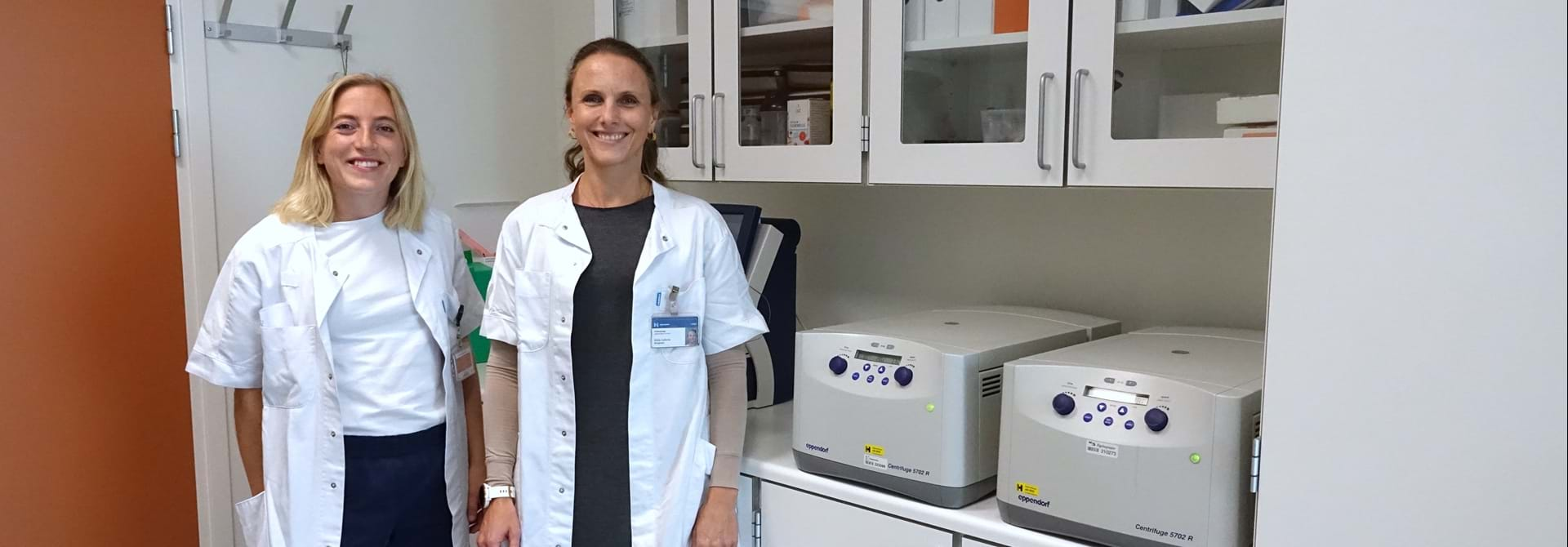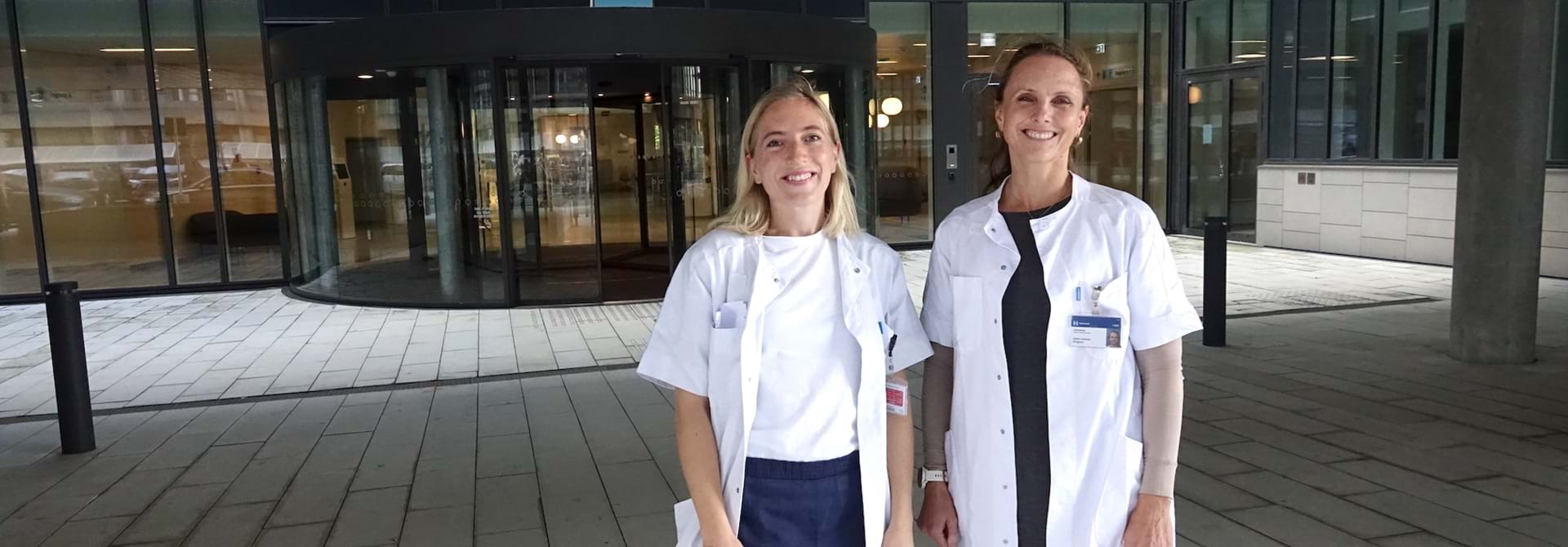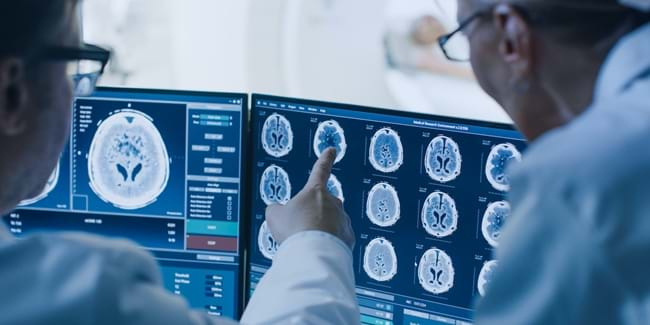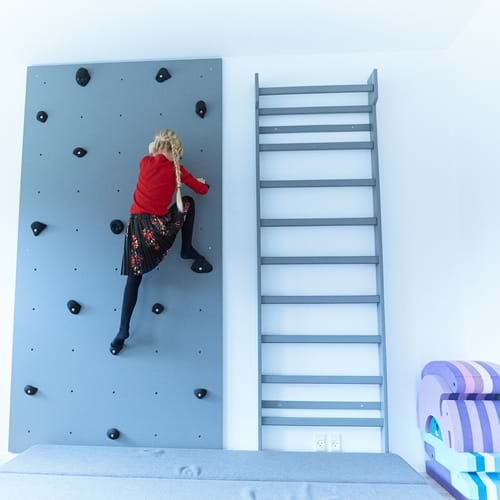Project aims to prevent disease in children with CP
Scientists from Rigshospitalet in Denmark want to prevent disease in children with cerebral palsy by making sure they receive the necessary nutrition and follow-up care. The Elsass Foundation supports this project, which in the long term can impact clinical guidelines on the national level.
Many children and adolescents with a moderate to severe degree of cerebral palsy (CP) have a significantly lower muscle mass relative to their weight. The significance and the medical consequences of this are not well understood. Scientists from Rigshospitalet found this problematic, and in 2018 initiated a project to ensure that paediatric patients with reduced muscle mass receive the optimal nutrition and follow-up care.
”Children and adolescents with low muscle mass often have difficulties with eating and are undernourished. They can be at risk for vitamin and mineral deficiencies that can lead to other medical issues. We want to investigate this so we can prevent it from happening,” says Mette Cathrine Ørngreen, paediatrician in the Department of Paediatrics and Adolescent Medicine at Rigshospitalet.
She is responsible for the nutrition project in collaboration with professor Christina Høi-Hansen, chief physician Peter Born, and Ph.D. student Marie Mostue Naume, among others.

From left: Ph.D. student Marie Mostue Naume and paediatrician Mette Cathrine Ørngreen.
BMI underestimates nutritional status
Initially, the Ph.D. student investigated 22 children with CP. Fifteen of these children have moderate to severe CP and use wheelchairs.
“We evaluated the children’s body composition with respect to muscle and fat mass, and checked their liver,” explains Marie Mostue Naume.
The children’s body composition was assessed in two ways; first by calculating their BMI (Body Mass Index), and second by using a scanner that can determine how much muscle and fat mass they have in their body.
The results showed that BMI underestimated their actual nutritional status.
”There were quite a few children who were categorized as underweight based on their BMI, but when we scanned them, we saw that they had a normal fat percentage relative to their muscle mass. There were also some children who were categorized as normal weight by their BMI, but the scanning showed that they were actually mildly overweight or obese,” explains Marie Mostue Naume.
Previous studies have shown that BMI is a bad estimate of nutritional status for both children and adults with CP. She stresses that the new study confirms these findings:
“If their food intake is too high, because their BMI categorizes them as underweight, they are at risk for developing metabolic syndrome, which involves disturbances of the body’s normal function and processing of nutrients.”
The results from the study will lay the groundwork for better nutritional counseling for children with low muscle mass.
“This is important knowledge for clinicians, so we in the best possible way can prevent that they get other diseases,” says Marie Mostue Naume.
A surprising result
One surprising finding from the study was that four of the children with low muscle mass showed the beginnings of scar tissue formation in their liver.
“This was a very surprising finding for us because it has not previously been demonstrated,” says Marie Mostue Naume, and continues:
“If the liver has scar tissue, its function is reduced. This is important for a clinician to be aware of because certain medicines are metabolized in the liver.”
All four children had epilepsy and took daily anti-epileptic medicine preventing seizures and movement difficulties, the paediatrician explains. However, she doesn't think this is the reason for the formation of scar tissue.
“The medicine the children take is not known to affect the liver, so the scar tissue is probably caused by something else,” says Mette Cathrine Ørngreen.
The scientists are in the process of investigating whether the use of Panodil (paracetamol) can explain the liver scar tissue in children with low muscle mass.
Their ambition is to update the guidelines in this area.
“We want clinicians to be more aware of how medicine can affect the liver, and that dosages should take body weight into consideration when the child has low muscle mass,” says Mette Cathrine Ørngreen.
She also points out that Rigshospitalet is already aware of this and is in the process of communicating the findings to the rest of the paediatric departments in the country, so there is no reason for parents to worry.
”Even though the effects we see on the liver are something we take seriously, and we are investigating the causes of these effects, there is no reason for parents of children with CP to be worried about this,” says Mette Cathrine Ørngreen.
Better quality of life
The entire nutrition project is expected to be completed in 2024. Afterwards, concrete interventions will be implemented.
“Based on data from several studies, we will plan and implement interventions to ensure optimal nutritional status for children before surgery from the perspectives of paediatrics, orthopedic surgery, and nutrition.,” says Mette Cathtrine Ørngreen.
The Elsass Foundation supports this project, which is an important part of the Foundation’s vision for increasing quality of life for people with CP.
”Malnutrition is a significant problem among the severely affected group of children and adolescents with CP, and there is a need for better interventions that ensure they get the necessary nutrition. We hope that we can prevent disease and improve quality of life for this group of people,” says Elsass Foundation’s CEO, Peter Lindegaard.


